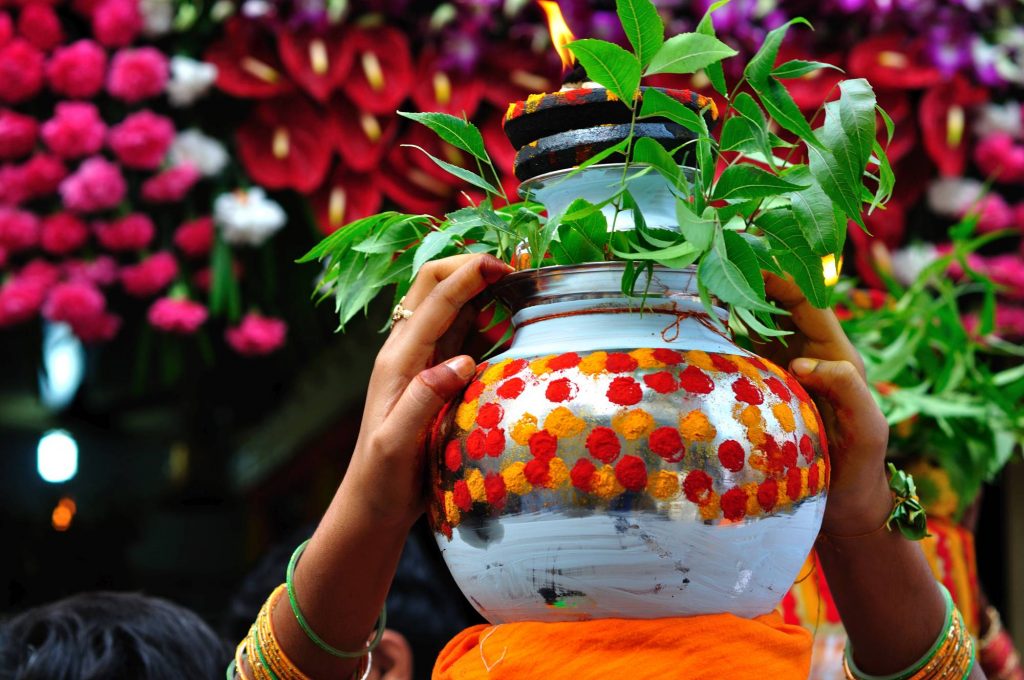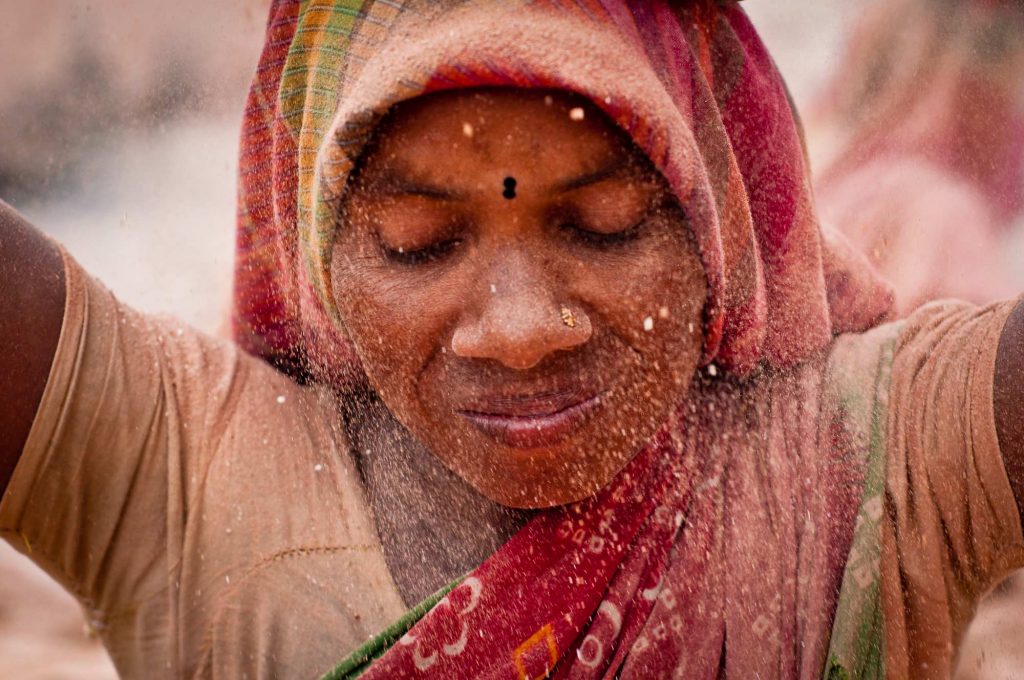With the wind of autumn, the whole Bengal counts days to greet their favorite Goddess. When the ecstasy of an upcoming vacation, new clothes, planning, shopping, and every single thing announce the grand arrival of “Ma Durga” (Goddess Durga), few narrow alleys of North Kolkata go through a backbreaking time to provide the city its most awaited joy. Durga makes her way through the century-old workshops of Kumartuli.
“Kumartuli”, meaning the Locality of the Potters, is one of the oldest vicinities of Kolkata. It has come a long way to emerge as a hub of art. As you walk down the streets, the muddy air and dingy lanes murmur the stories of the artisans who have been working for generations in the same dark studios, crowded with gigantic Durga idols. Ignorant to the curious passers-by and over-enthusiast photographers, the artisans engross themselves into putting life to the clay structures. They are the “God-makers”.
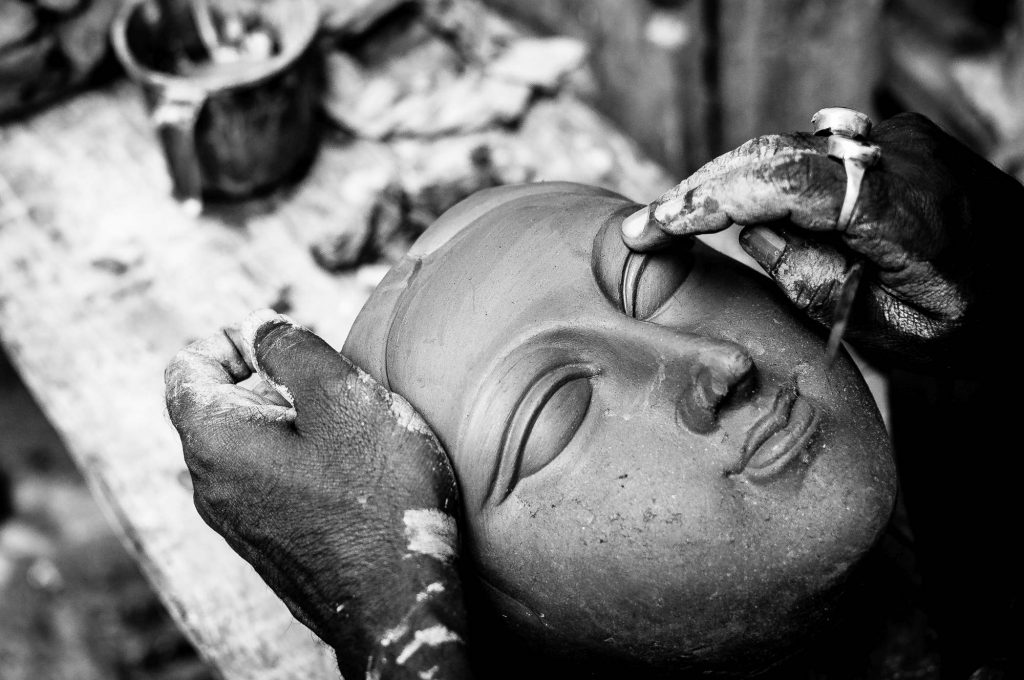
The graceful face of the Goddess is being carved by the skillful hands of an artisan of Kumartuli. The idols are made of mud clay. As per the tradition, the blessed soil from the front doorstep of prostitutes is added to the clay mixture, which goes into the making of the auspicious idols.
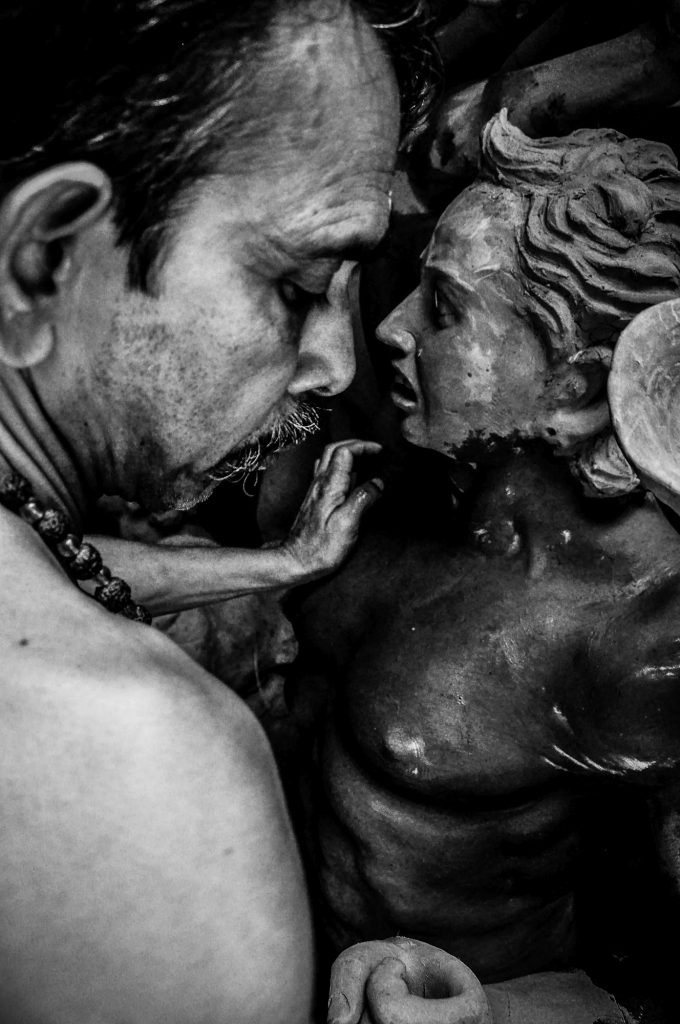
An artisan is seen as he completes the final touch-ups on the Mahishasura idol before the painting could start.
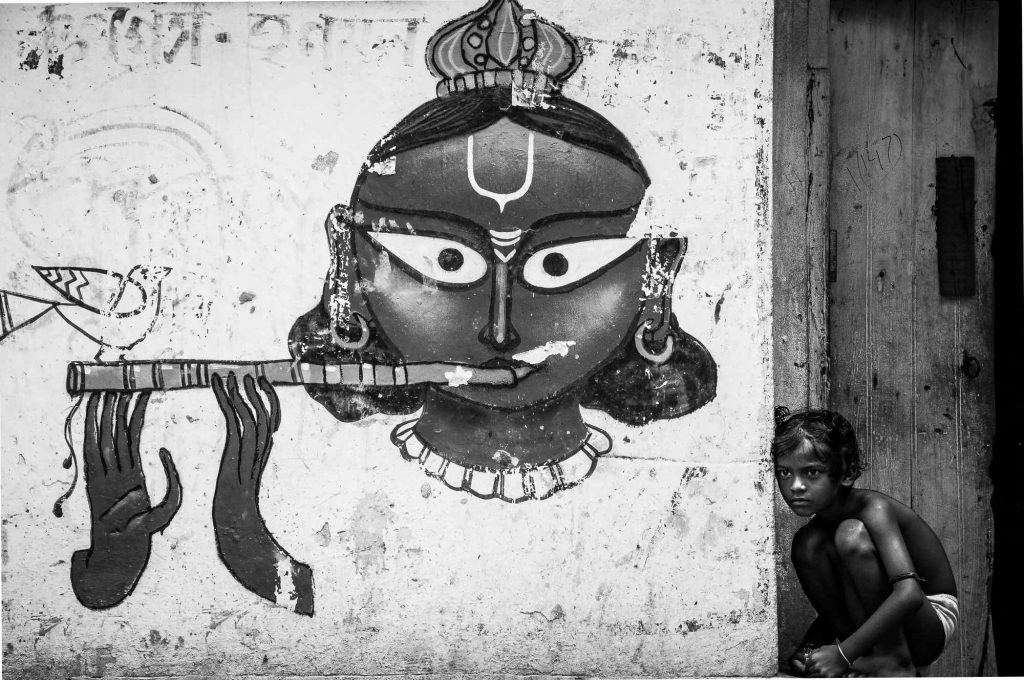
A kid poses in front of a wall-graffiti of Hindu God Krishna painted by the local artists of Kumartuli.
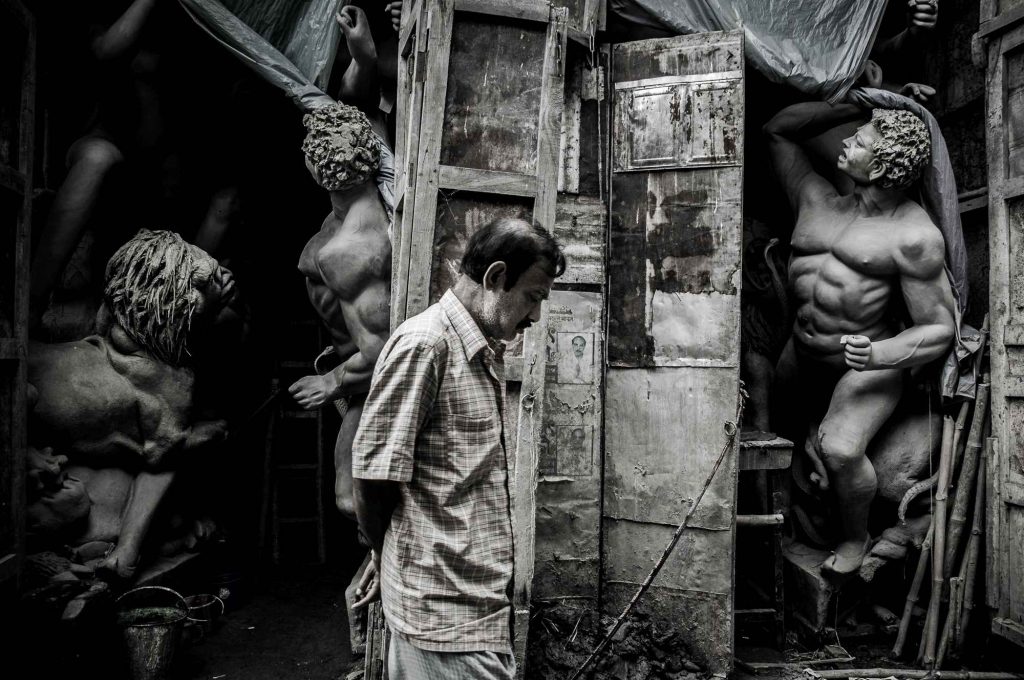
A passer-by is seen as he walks in front of the studio gates of Kumartuli.
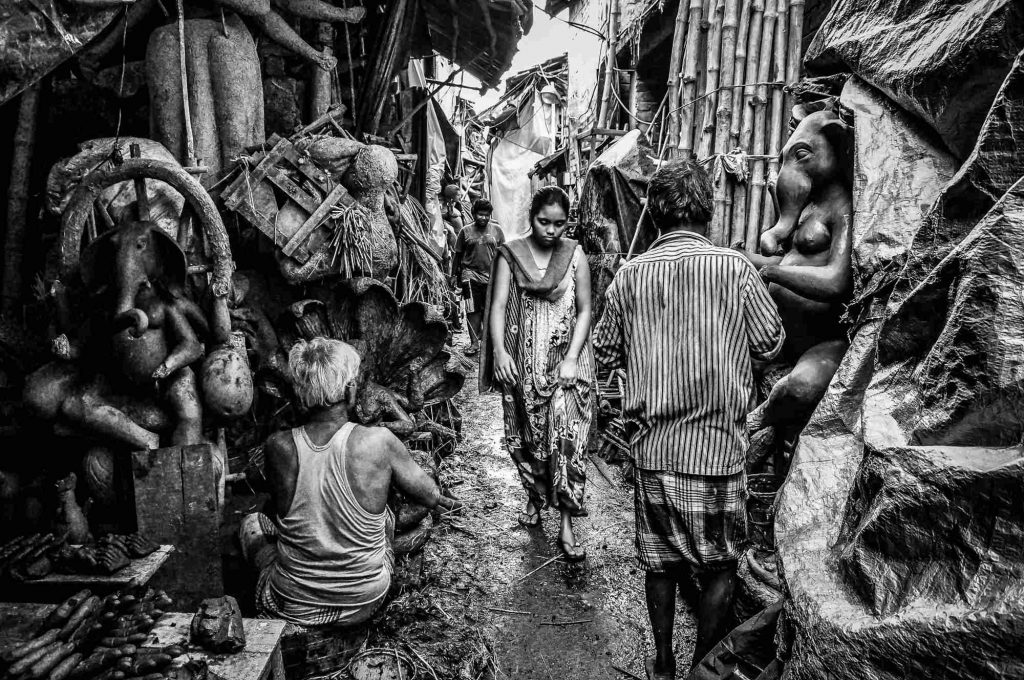
The dingy, muddy, narrow lanes of Kumartuli. A lady, in her house-gown, passes through the alleys as the artisans continue to work.
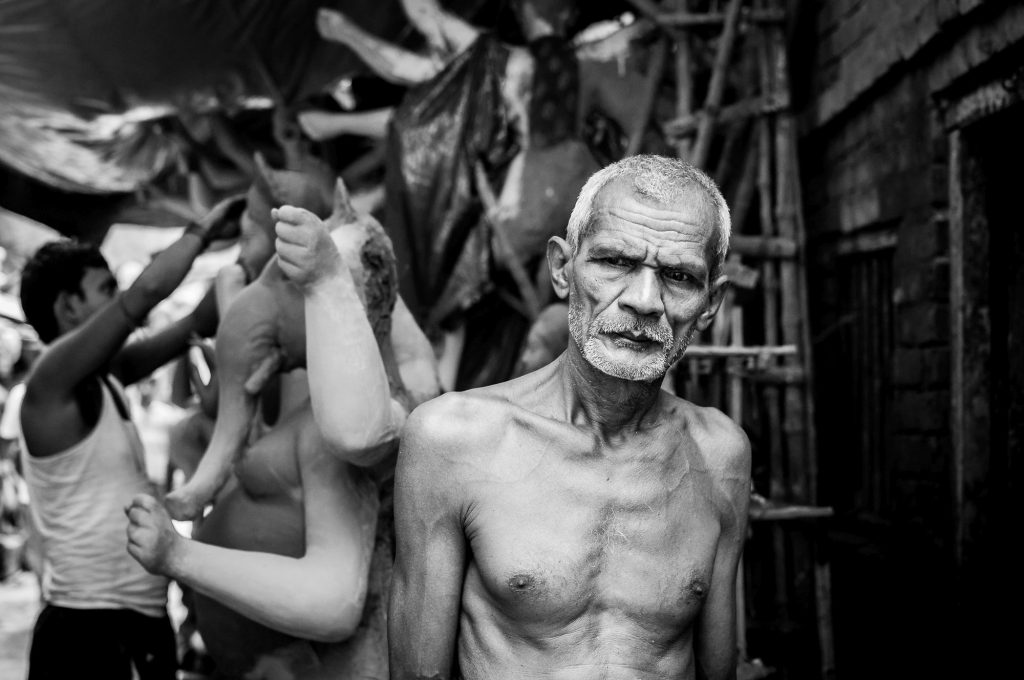
An aged artisan poses in front of his road-side studio as his son continues to work. The skills of making idols have been passed on from one generation to next.
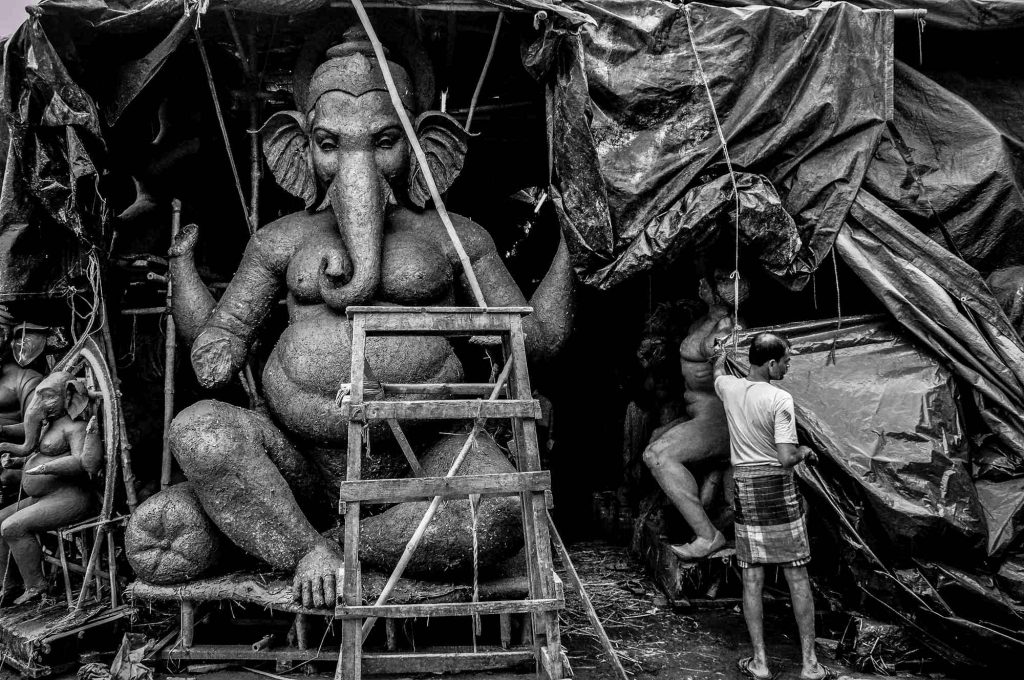
A gigantic idol of Lord Ganesha is seen as a worker pulls the plastic sheets to cover the idols from rain.
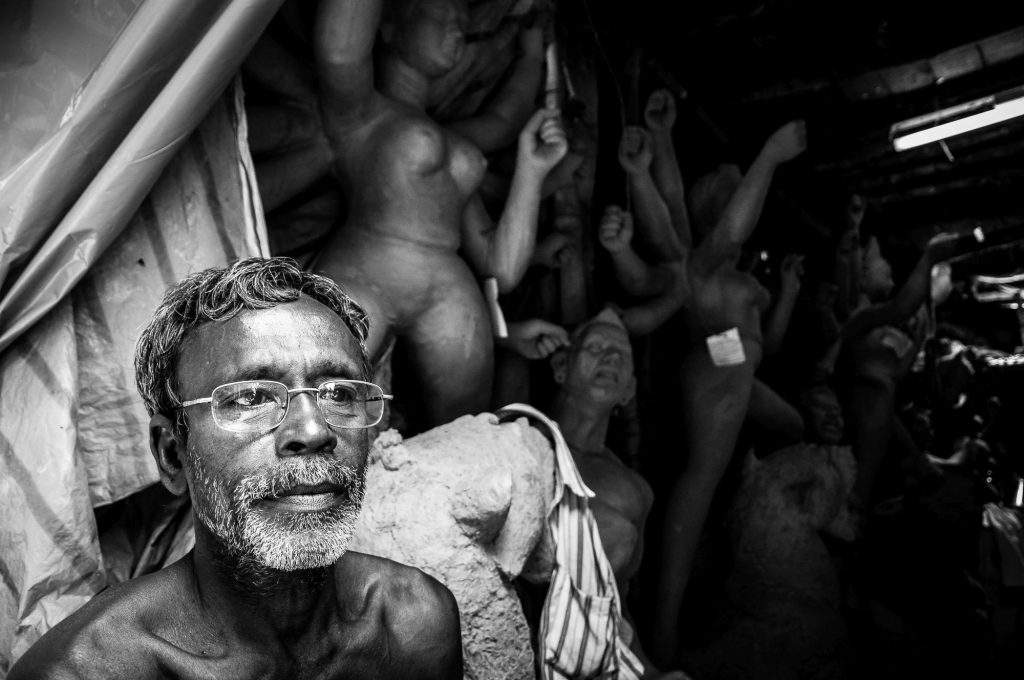
An artisan poses in front of his studio. The renowned artists generally get an order of 20-25 Durga idols per year, where the others get an average order of 10-15. Every year, a number of idols are exported to other countries as well.
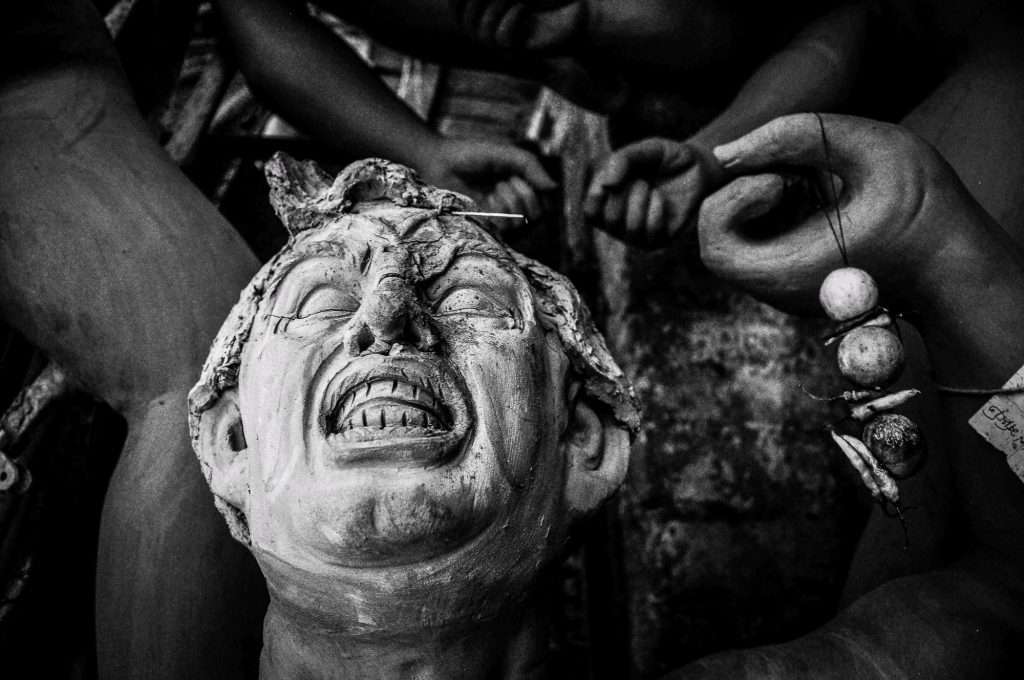
The portrait of an idol of Mahishasura can be seen. According to Hindu mythology, Mahishasura was an evil King who was defeated by the Goddess Durga.
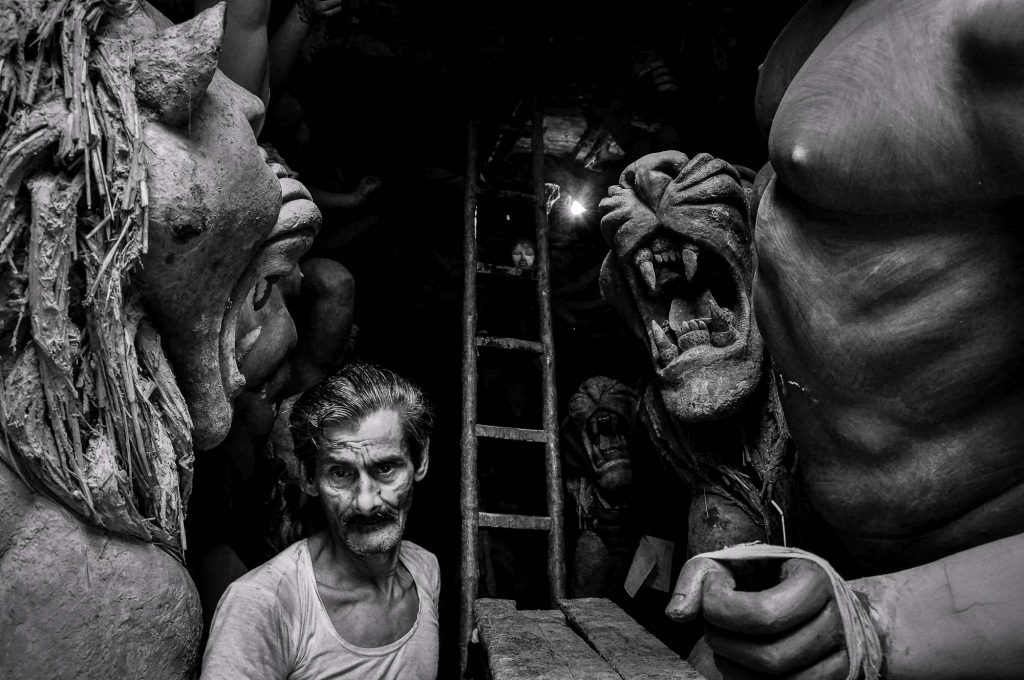
An artisan is seen as he comes out from a studio. These studios are usually very dark, hardly any daylight reaches inside. The artisans use kerosene lamps or electric bulbs as they work inside the studios.
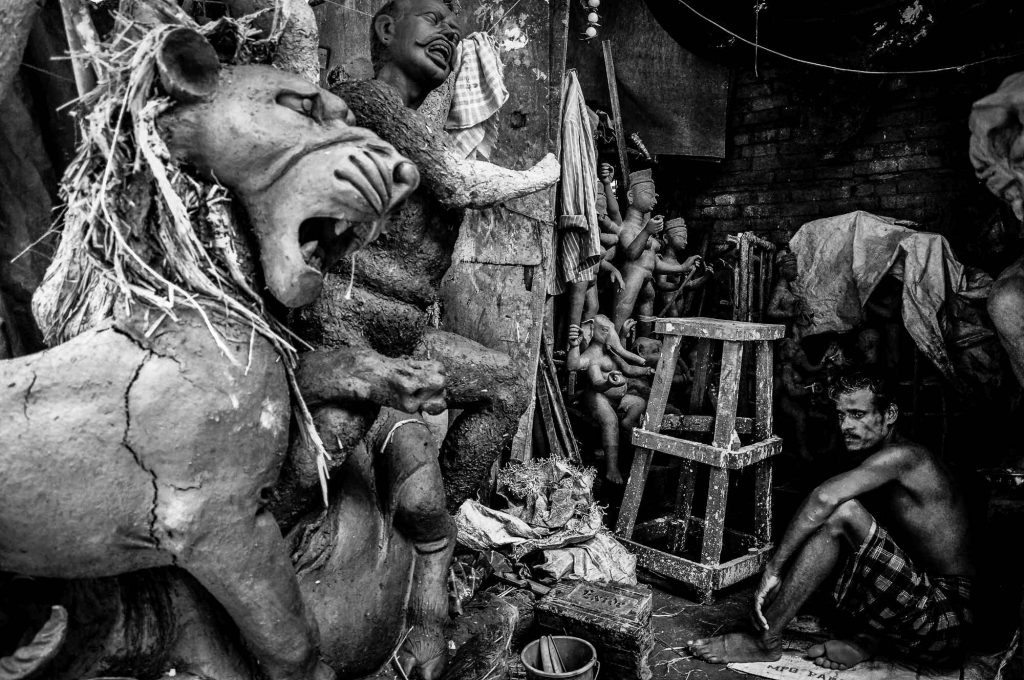
A worker takes a rest in the workshop surrounded by the idols. Many of the workers come from rural Bengal and work at Kumartuli during this period. They get paid on daily basis along with the food and accommodation.
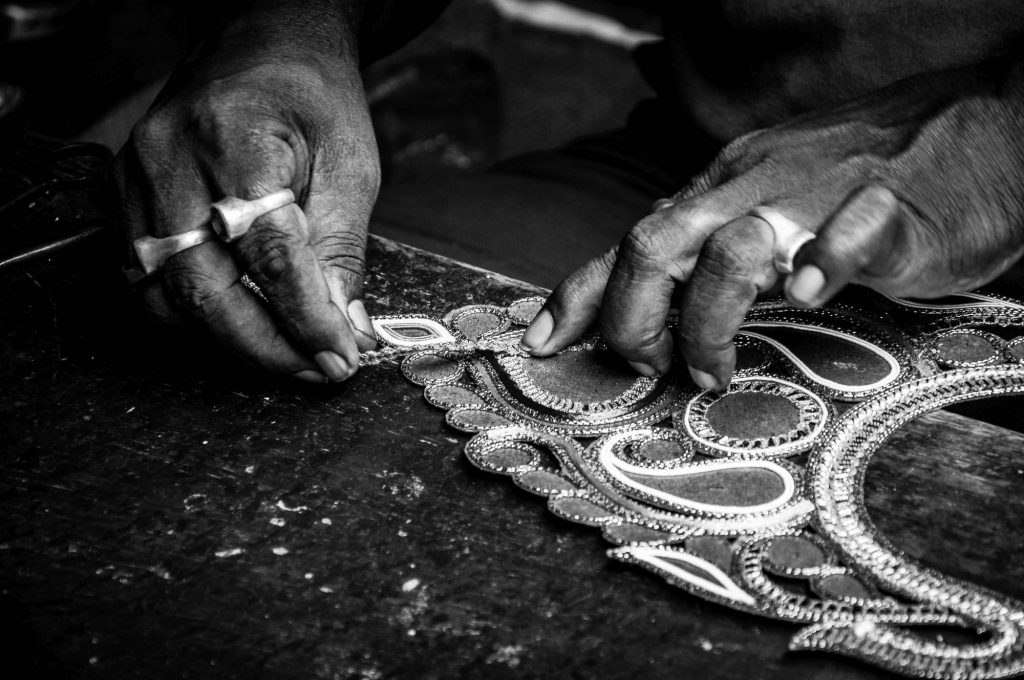
The skillful hands are busy making the ornaments for the Durga idols. There are a number of workshops and shops in Kumartuli where these ornaments (made of paper and polystyrene) are made and sold.
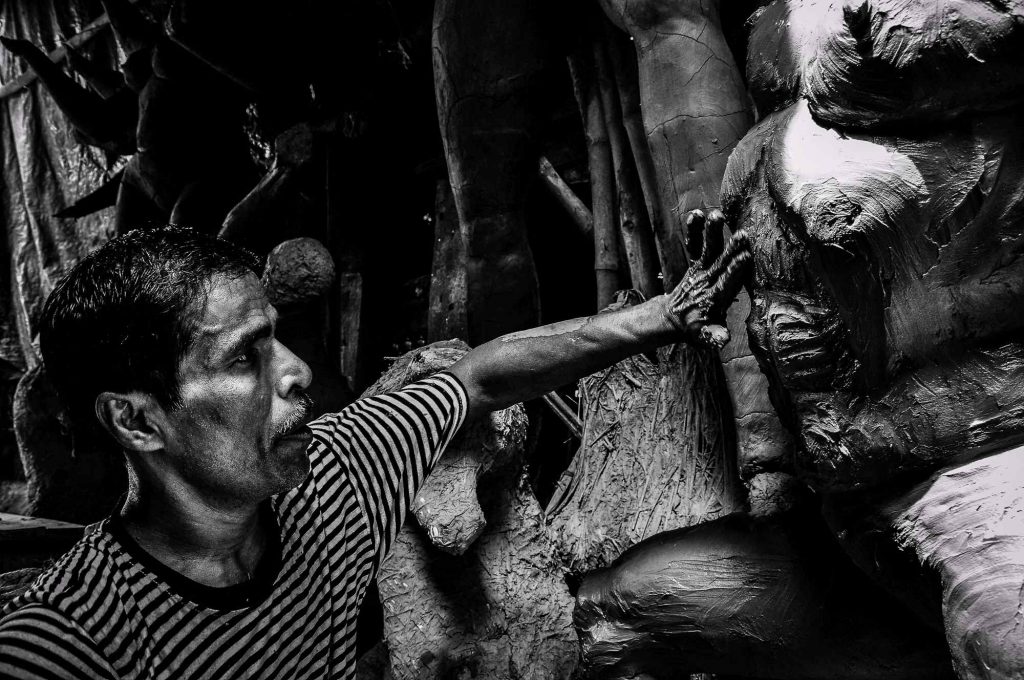
An artisan is seen as he applies the layers of mud on the idols.
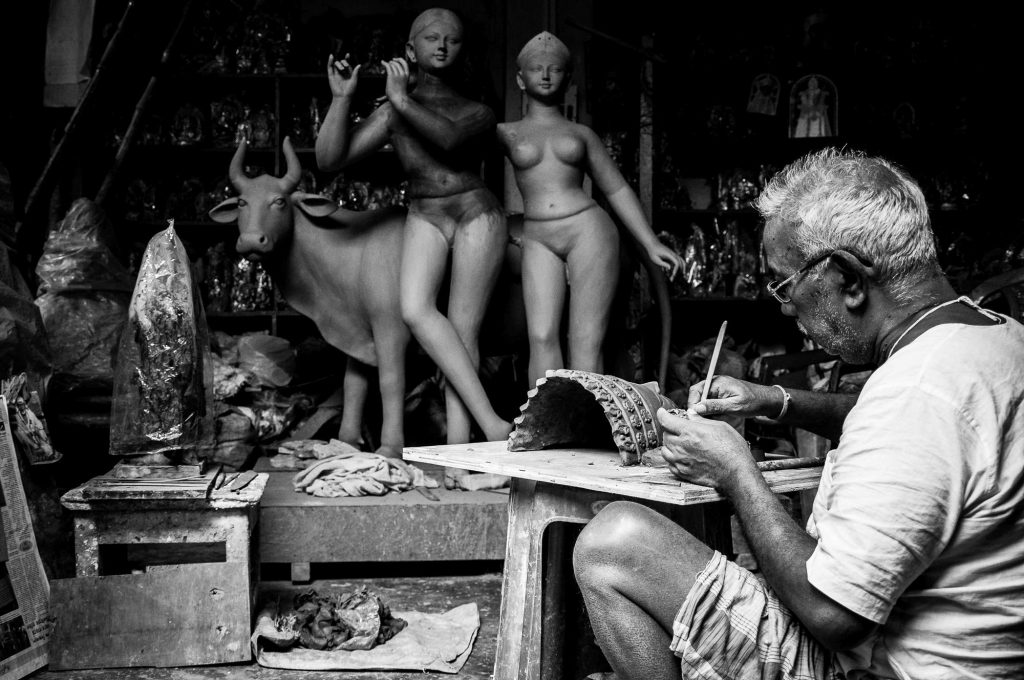
An old artisan, engrossed in his work, is seen as he sculpts the face of the Goddess Durga.
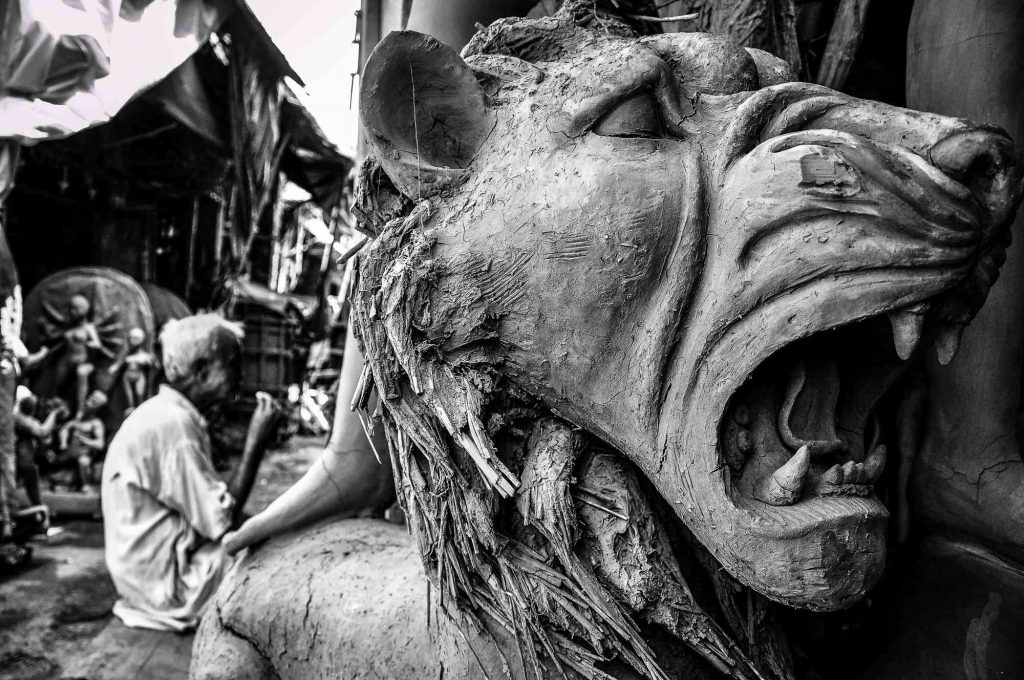
As per Hindu mythology, Lion, symbolizing power, will, and determination is the carrier (Bahana) of the Goddess Durga. An aged man is seen in the backdrop as he is having his lunch just outside his workshop.
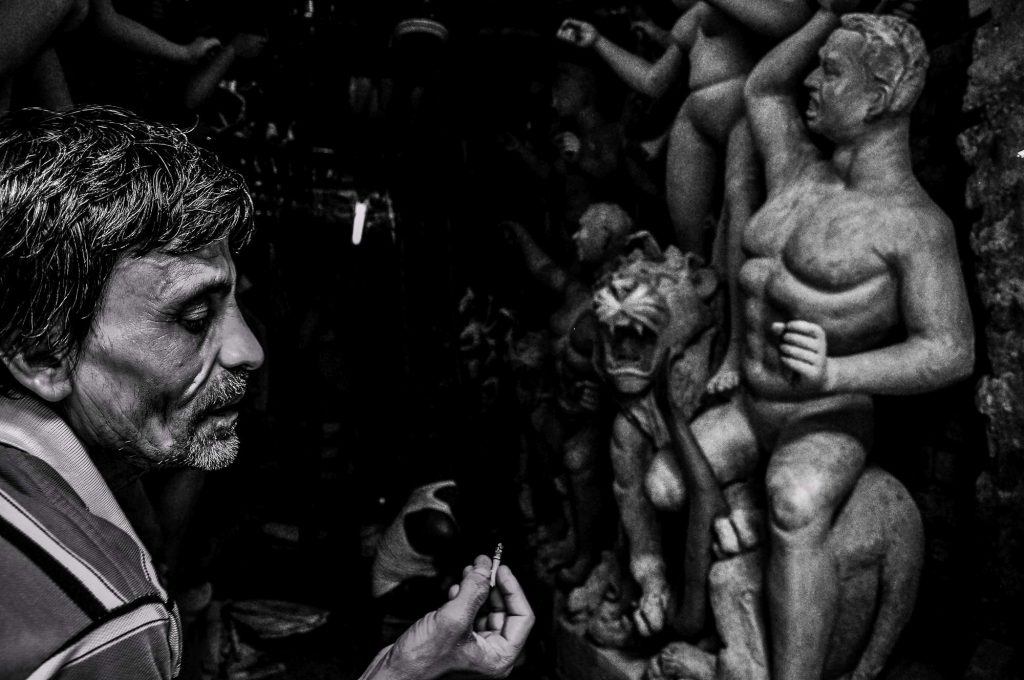
A worker takes a break from work and smokes just outside the studio. During the peak season, the studios are occupied with huge idols, hardly leaving any place to move around and work freely.
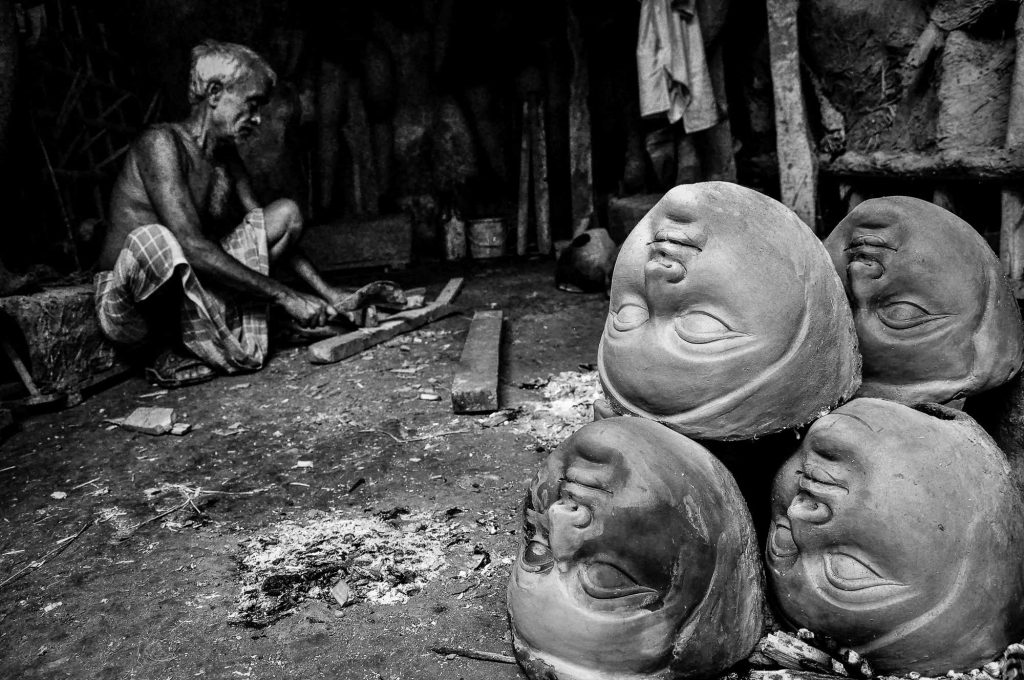
An aged man is seen working in his studio as the heads of Durga idols are left for cooling down after burring them in direct flame. The clay, once burned, becomes dry and hard.
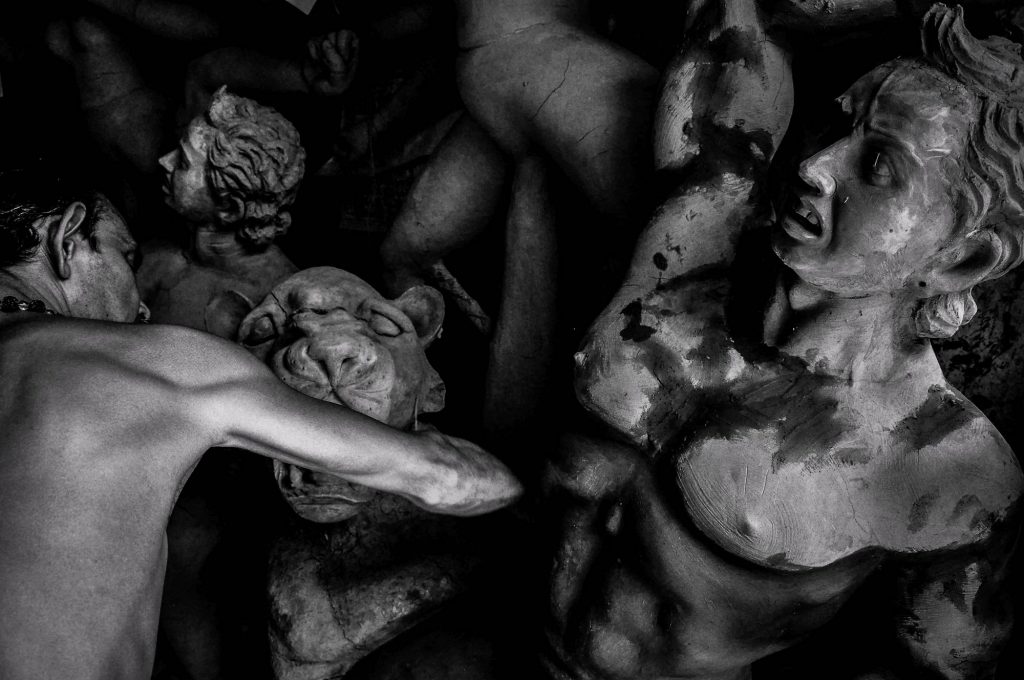
An artisan is seen as he applies wet mud to smoothen the skins of the idols.
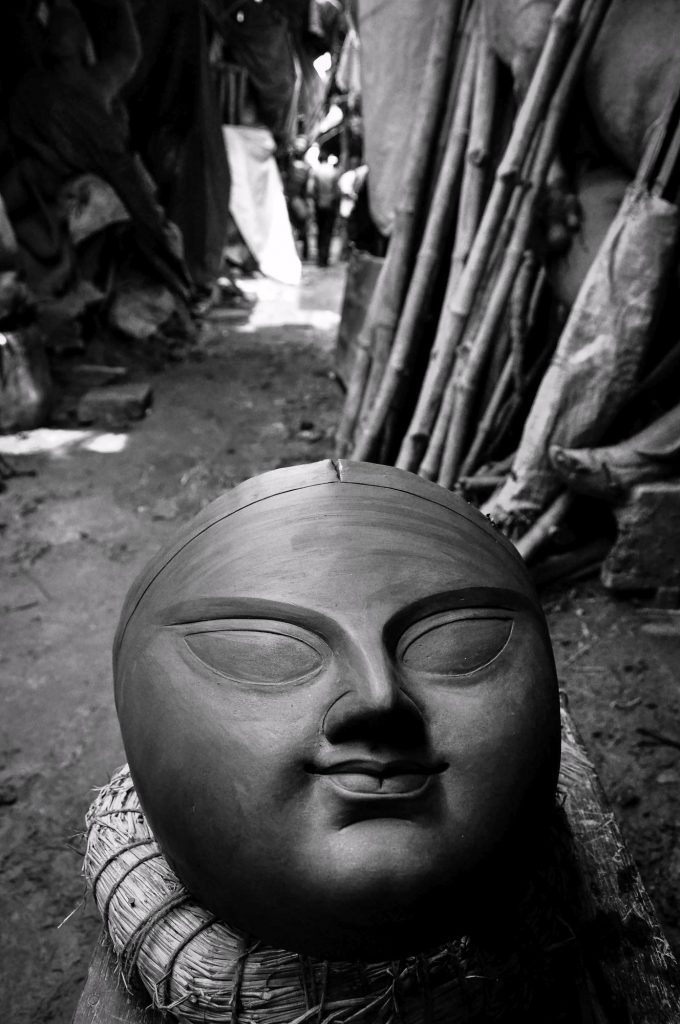
The face of the idol is kept road-side for drying.
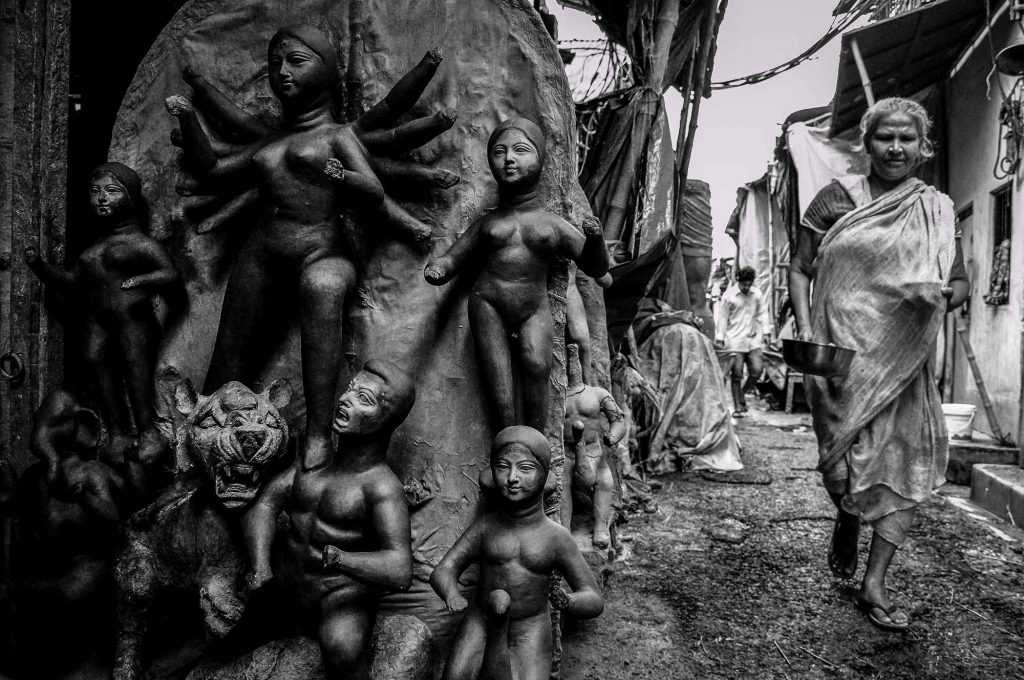
An old lady, busy in her daily routines, is seen as she passes by the narrow alleys of Kumartuli.
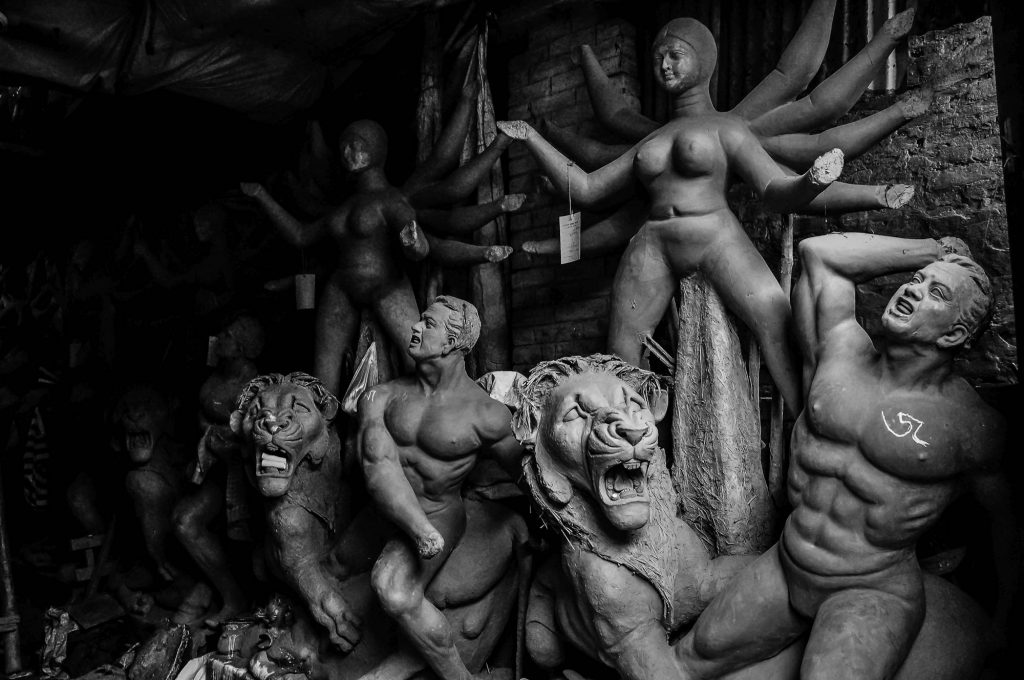
The Durga idols are kept for drying before applying the colors on them.
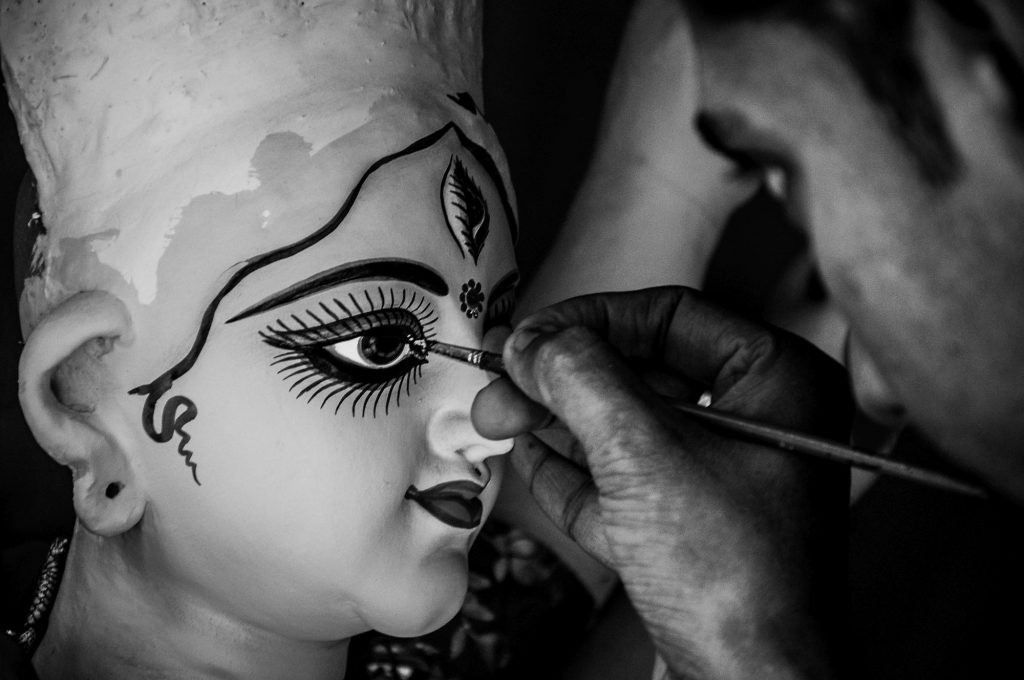
An artisan is seen as he paints the eyes of Goddess Durga. It’s an age-old custom to paint the eyes of the Goddess on the auspicious morning of Mahalaya. Though it has rather become obsolete these days, still the custom is followed by many elderly artisans.
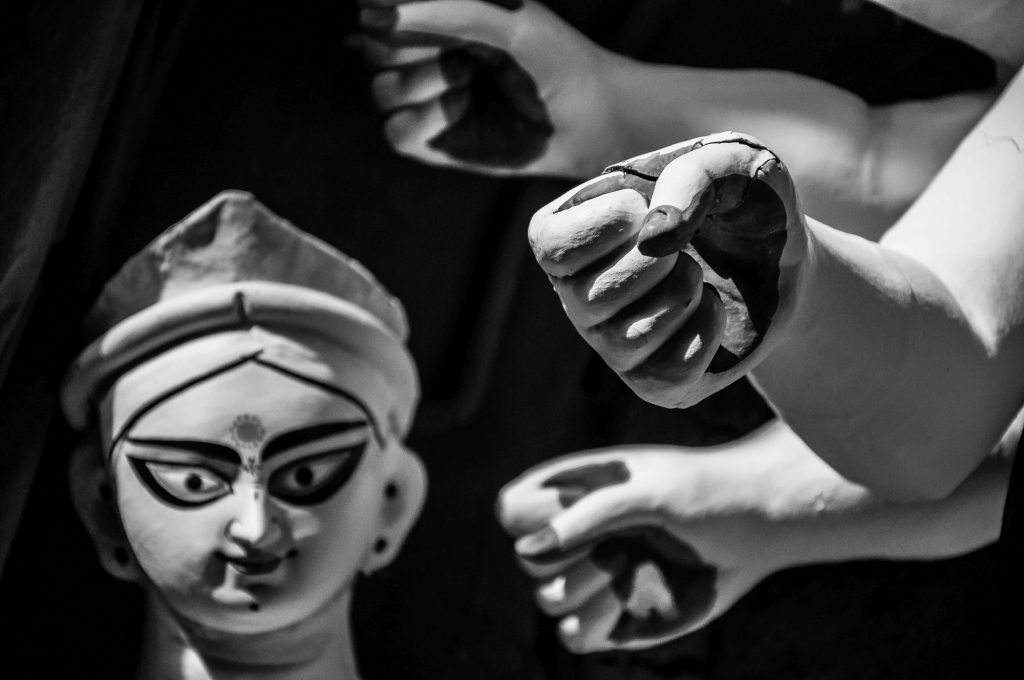
The painted idol of Laxmi, the Goddess of wealth and prosperity, and the hands of Goddess Durga are seen inside a studio in Kumartuli.
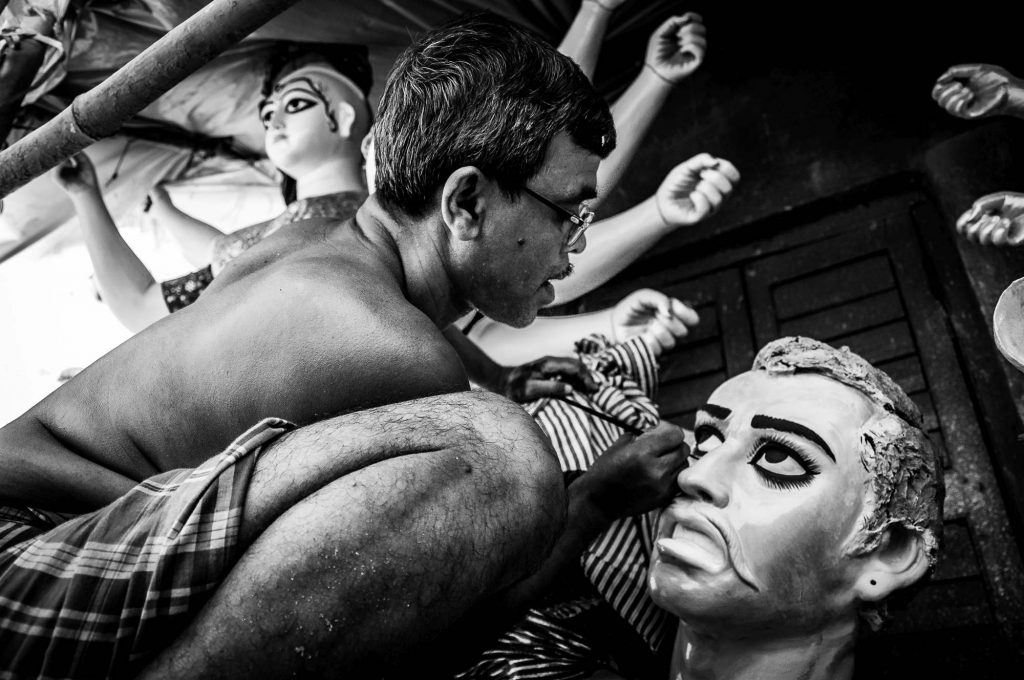
An artisan paints the eyes of an idol of the Mahishasura.
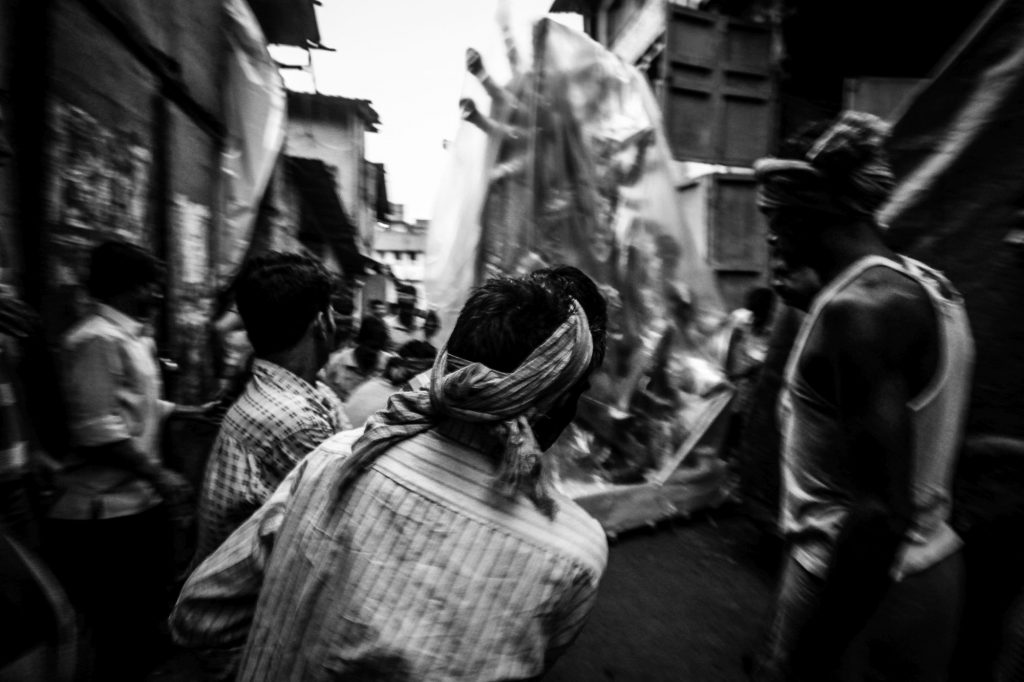
Labors are seen as they pull out the Durga idol from the studio. They carry the Durga idols to the pandals where the Goddess will be worshipped for 5 days during the festival.
But days are nearing when the whole area will be renovated – those narrow lanes, dark studios which still tell the story of the old City, will themselves become a story of recent past. The State Government has plans to modernize this little piece of old Kolkata with the multi-story complex and well-lit studios, tidy workshops, exhibition hall, and training facilities. The artisans would continue their work in the new studios, the fervor of the old studios may still linger in the air, but Kumartuli would change beyond recognition – undoubtedly for the better. And yet one more living history of the City of Joy will fade away into oblivion.
